What is Naadam? The story behind Mongolia’s ‘Three Manly Games’
Editor’s Note: This CNN Travel series is, or was, sponsored by the country it highlights. CNN retains full editorial control over subject matter, reporting and frequency of the articles and videos within the sponsorship, in compliance with our policy.
In many travelers’ minds, Mongolia conjures images of vast plains, nomadic gers, desert landscapes and one of the most famous warriors of all time, Genghis Khan.
Though the famed first khagan of the Mongol Empire died in 1227, his legendary pursuits continue to reverberate across this beautiful land. The country’s most important annual event, the Naadam festival, is no exception.
Nowadays it’s the event of the year, a nationwide celebration of sports and arts attended by thousands of Mongolians and a hot draw for international tourists, too. Given its popularity, travelers looking to experience this one will want to start looking ahead to July 2024 now.
Here’s a quick guide to the action and how to see it.
What is the Naadam festival?
The event is often referred to as “Eriin Gurvan Naadam” – which translates to “Three Manly Games.”
Mongolian native Buyandelger Ganbaatar, country director of tour company Nomadic Expeditions, tells CNN that Naadam actually has over 2,000 years of history and it was originally a means of preparing for war, as Mongolia-dwelling tribes regularly raided each other.
“Naadam means ‘games’ in the Mongolian language and it includes three main competitions, Mongolian wrestling, archery and horse racing,” he explains.
It’s also the largest gathering in Mongolia, with 21 provinces all taking time off to celebrate their traditional nomadic culture and heritage, “from the capital city of Ulaanbaatar to the remote towns of the Gobi.”
The main official event takes place July 11-13 in the capital city, in Ulaanbaatar’s National Stadium.
“During the festival, it is possible to see pride, joy and happiness on every face,” says Ganbaatar. “Naadam has become (part of) the national identity of Mongols.”
It all started with Genghis Khan
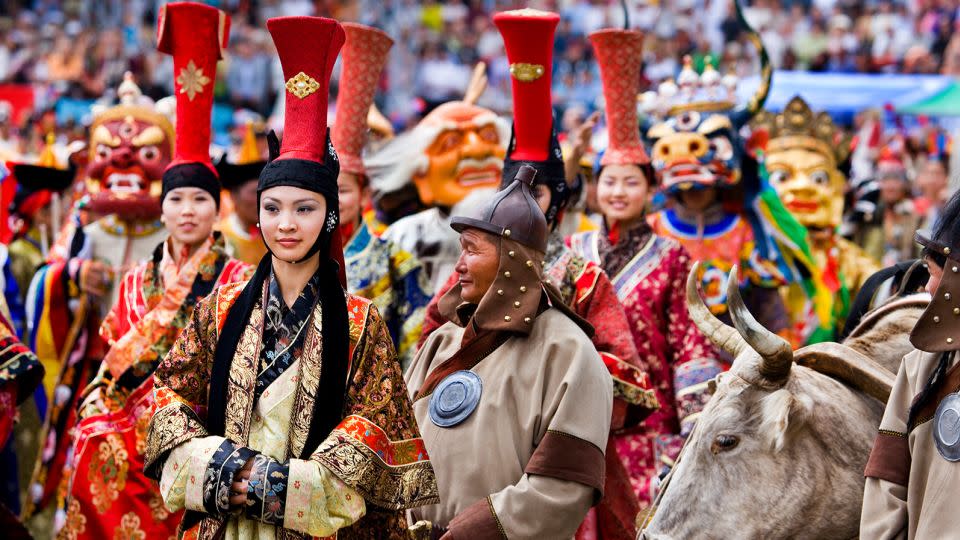
It wasn’t until 1921 that Naadam was officially declared an annual national holiday in Mongolia.
For hundreds of years though, this trio of events – archery, horse riding and wrestling – was believed to have been integral to building important skills for the region’s nomads as well as Mongolian soldiers.
According to some historical accounts, in the early 13th century, after Genghis Khan defeated his enemies and ruled over the Mongol tribes, he held the games as a celebratory event.
Providing evidence of this, the Stele of Genghis Khan – a stone dating back to the 1200s bearing the first known Mongolian script – depicted a nobleman named Yesunge who managed to shoot a target with an arrow from a distance of more than 500 meters.
In 2010, Naadam was added to the UNESCO List of the Intangible Cultural Heritage of Humanity.
“Mongolian Naadam is inseparably connected to the nomadic civilization of the Mongols,” says the UNESCO inscription.
“The three types of sports are directly linked with the lifestyles and living conditions of the Mongols and their transmission is traditionally undertaken through home-schooling by family members, although formalized training regimens have recently developed for wrestling and archery. The rituals and customs of Naadam also accentuate respect for nature and the environment.”
Easier than ever for international travelers to visit
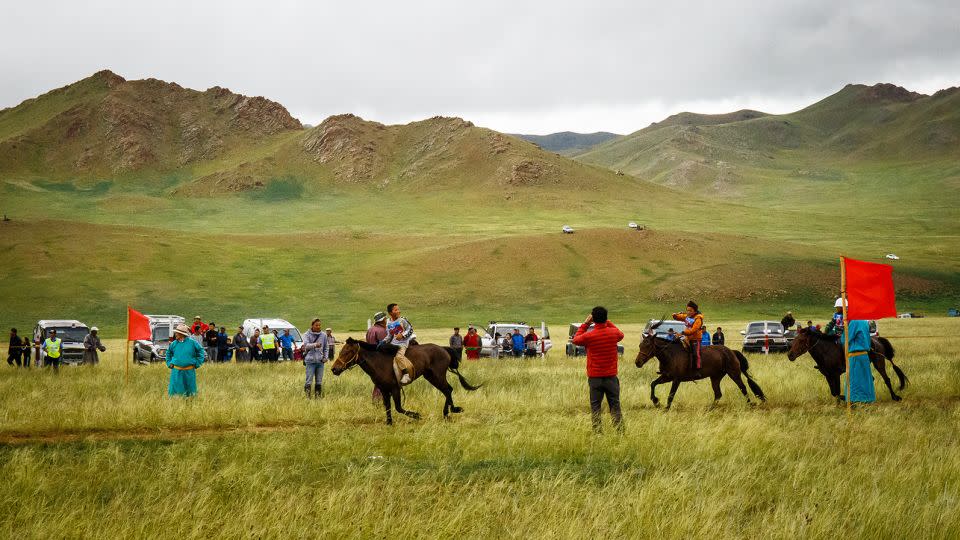
The multi-day national Naadam holiday was extended from three to five days by the Mongolian Government in 2020, and much of the country shuts down during this period.
Naadam is also one of the most popular times for international travelers to visit Mongolia, with more than 11,000 foreigners coming specifically to see the games in 2019 according to local news reports citing government statistics. The country received about 637,000 international travelers in total that year.
The Naadam games took place virtually for two years, from 2020-2021, because of the pandemic. With the effects of border closures still lingering in 2022, hopes were high among authorities that the just-concluded 2023 Naadam festival would mark the start of a comeback for international tourism.
To boost tourism in general, the Mongolian government declared 2023-2025 the “Years to Visit Mongolia.” As part of the campaign, travelers from an additional 34 nationalities can visit Mongolia visa-free for up to 30 days.
The addition of several European countries as well as Australia and New Zealand brings the total number of countries and territories on Mongolia’s visa-exempt list to 61.
From the capital to the countryside
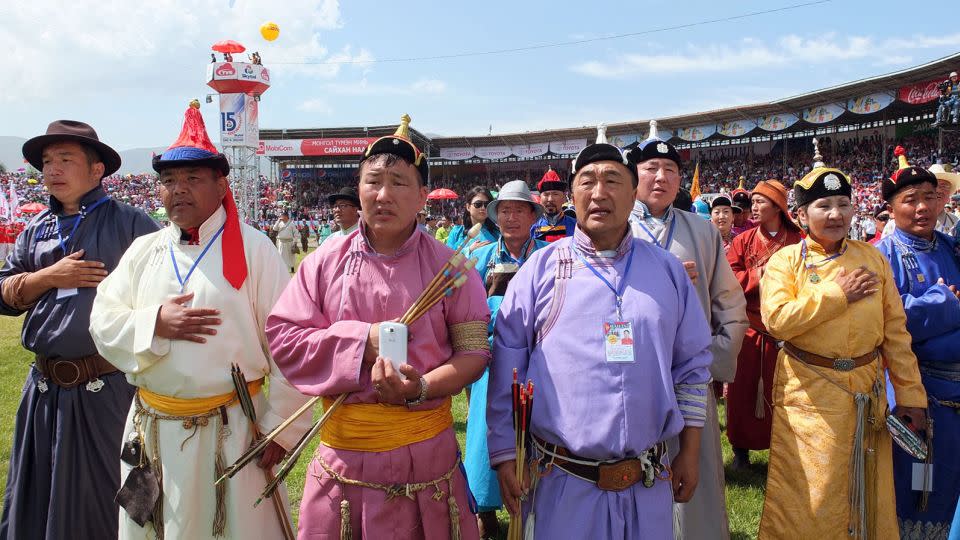
In addition to the major festivities held in Ulaanbaatar, there are Naadam games – of different scales – held across Mongolia in the countryside. Many tour companies offer these as an alternative.
Travelers headed for the main Naadam festival at the National Stadium can expect a massive party with an opening ceremony, parades, performances and, of course, the games, to be held in Ulaanbataar over a few days.
The opening ceremony is a grand celebration that showcases the best of Mongolian dance, music and other cultural traditions. One particularly special event that takes place during this event is the parade of the Nine White Banners. Horse riders in traditional attire march into the stadium hoisting a banner attached to a pole with white horse tail hairs on top.
According to Nomadic Expeditions, the white banners were carried during peace negotiations and festivals since the time of Genghis Khan.
Today, the Nine White Banners are a sacred emblem of Mongolia and are usually kept in the State House.
Can women compete in the ‘manly games’?
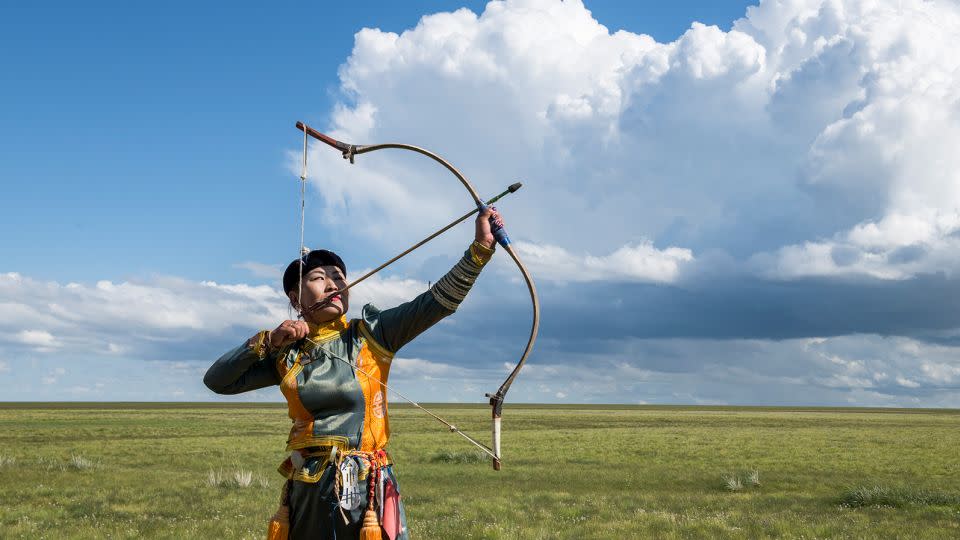
Most of the games are open to participants of all ages and genders, except for wrestling. Male athletes only.
In Ulaanbaatar, hundreds of the nation’s top wrestlers compete for two days in nine untimed, single-elimination rounds.
“There are no age limits, no time limits, and certainly no size limits in competition,” says Nomadic Expeditions on its website. “It is not uncommon to see a David and Goliath-style match, often with the smaller guy winning.”
Multiple competitions happen at the same time as athletes, dressed in a hat, a shoulder vest and shorts, pair up and try to throw their opponents to the ground. A competitor loses if any parts of their body other than their hands and feet touch the ground.
The main archery competitions take place next to the National Stadium, at the National Archery Field, over several days. In one style of event, for example, the archers shoot their arrows toward a series of leather targets on the ground. Those who hit the most win.
Meanwhile, the horserace competitions are held at fairgrounds outside Ulaanbaatar. These long-haul races test the horses’ endurance and the animals are primarily ridden by child jockeys. Though the sport is part of the country’s heritage, the age of the riders has attracted criticism in recent years. leading the government to amend related regulations to improve safety standards surrounding the sport.
At the end of each race, the crowd rushes forward to surround the winning horse. Why? The sweat of the winning horse is said to be lucky.
Any special foods?

Visitors to any of the Naadam festivals are going to eat well.
Vendors and markets pop up outside each of the game venues in each province.
In between the games, spectators would be wise to grab a khuushuur, a round deep-fried meat dumpling that is the unofficial snack of Naadam, from a street vendor nearby.
Is it difficult to get tickets?
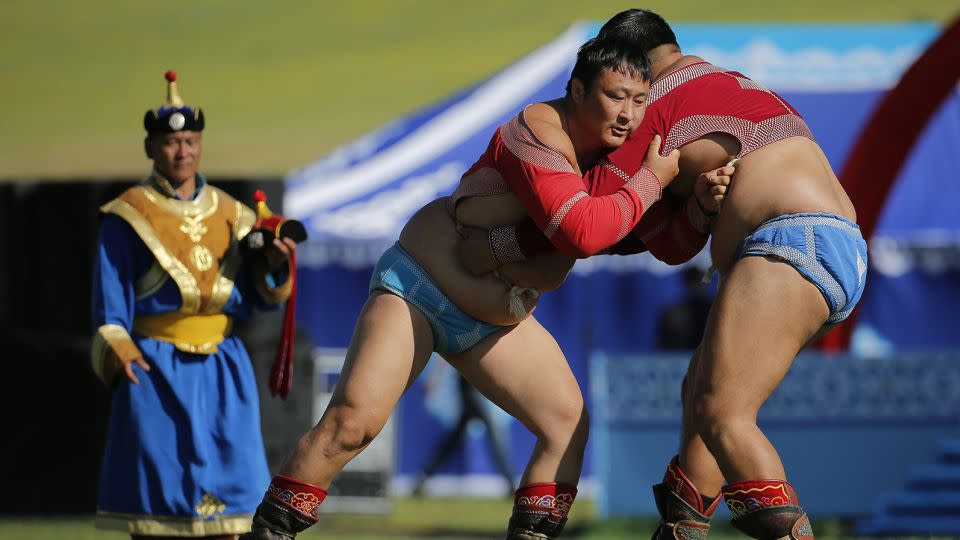
International travelers should arrange their accommodation and tickets far in advance if they wish to visit Mongolia during the Naadam festival. That includes the weeks before and after the games.
Tickets to the opening and closing ceremonies in Ulaanbaatar are especially limited.
The stadium seats 11,000 people and around 2,500 tickets are reserved for international tourists each year. This year’s prices were $25 per ticket.
Ticket sales usually only open about a week before the game. But travelers can purchase through a tour company in advance. Some book through their local hosts and accommodations.
If you fail to get a ticket, you can still attend the horseraces.
For more CNN news and newsletters create an account at CNN.com


